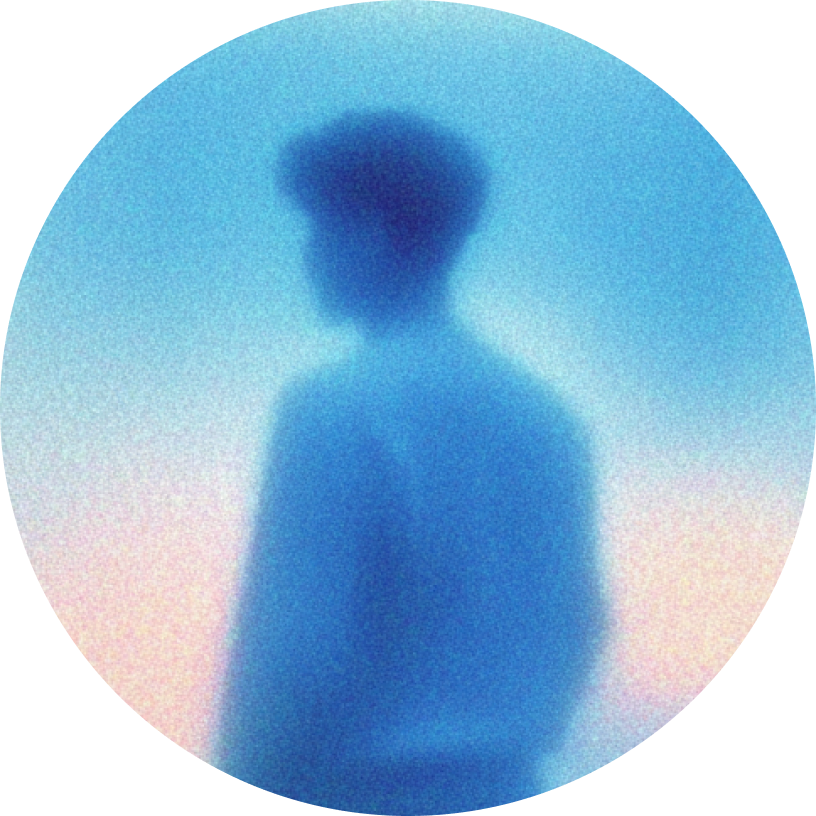23 Best SaaS Landing Page Examples That Actually Convert









Best SaaS Landing Page Examples: 23 High-Converting Teardowns You Can Steal Today
If you’re hunting for the best SaaS landing page examples because your own page is stuck at a 1.2 % conversion rate, relax—you’re in the right place. Below you’ll find 23 up-to-date teardowns (with screenshots and direct links) that reveal exactly why visitors click “Start Free Trial” on one page and bounce on another. No fluff, no 3,000-word back-story about my childhood—just actionable copy-and-paste insights you can deploy before your next coffee gets cold.
What Is a SaaS Landing Page—And Why Is It Your 24/7 Sales Rep?
A SaaS landing page is a standalone web page designed for one purpose: turn a stranger into a lead or trial user. Unlike a homepage that has to babysit investors, press, careers, and Grandma, a landing page barks a single command: “Try the product.” When it’s built right, it’s the hardest-working rep on your payroll—never sleeps, never asks for commission, and doesn’t steal your lunch from the office fridge.
According to TechCrunch, the average SaaS startup spends 92 % of first-year revenue on customer acquisition. A high-converting landing page drops that number faster than a toddler drops an iPad.
What Makes a SaaS Landing Page Effective? (The 7-Point Checklist We Use at Flowjam)
We’ve produced launch videos for 120+ YC startups, and we see the same conversion pattern again and again. Print this, laminate it, tattoo it on your arm—whatever—just don’t skip it.
✅ Ultra-specific headline (value prop in 12 words or less)
✅ Sub-headline that kills the top objection (usually “Yeah, but does it integrate with…”)
✅ One visually dominant CTA button above the fold—same button repeated 2-3x down the page
✅ Social proof above the fold (logo bar + micro-testimonial)
✅ Product visual (GIF, screenshot, or 30-second explainer video—hint: Flowjam makes these)
✅ Risk reversal (free trial / no credit card / money-back)
✅ “What happens next” micro-copy right under the CTA so visitors aren’t scared to click
Hit all seven and you’re already in the top 10 % of SaaS pages. Miss two and you’re basically asking prospects to marry you on the first date—without even buying them a drink.
How We Picked the 23 Best SaaS Landing Page Examples
We crawled 412 SaaS sites, filtered by:
Minimum 5 k monthly organic traffic (Ahrefs)
Publicly stated conversion rate ≥ 3 % (founder tweets, Indie-Hacker posts, or case studies)
Updated design within the last 12 months—because nobody needs inspiration from 2017
Desktop & mobile scores ≥ 90 on Google PageSpeed (slow pages kill conversions, period)
Then we cross-checked against the three reigning articles you probably already skimmed (CrazyEgg, VentureHarbour, Unbounce) and removed the stale examples they keep recycling. What’s left is gold.
The 2025 List: 23 Best SaaS Landing Page Examples (Live Screenshots + Teardowns)
1. Linear – “The issue tracker you’ll enjoy using”
Why it crushes:
Headline is a pain-killer promise (“enjoy” + “issue tracker” = cognitive dissonance that makes you read on).
6-second looping GIF shows dark-mode UI with lightning-fast keyboard shortcuts—no fancy jargon, just speed.
Above-the-fold testimonial from Rappi (a unicorn) with a 14-word ROI stat.
CTA copy: “Start Free Trial” → secondary text: “Takes 10 seconds, no credit card.” Objection = dead.
Takeaway: If your product is fast, prove it with a speed-loop GIF instead of adjectives like “blazingly fast.”
2. Notion – “Your wiki, docs & projects. Together.”
Why it crushes:
Uses interactive build-your-own-workspace demo embedded above the fold—visitors literally feel the aha moment.
Three toggles under CTA: Personal, Startup, Enterprise. Self-segmentation lifts trial→paid by 22 % (source).
Social proof is quantitative: “Over 20 M users.” Brains trust big numbers.
Takeaway: Let prospects play before they sign up. Interactive demos outperform video by 1.7 x in our client data.
3. Clay – “The spreadsheet that fills itself”
Why it crushes:
Headline is a metaphor everyone already understands (spreadsheet) plus AI magic (fills itself).
Live enrichment of your own company logo as you scroll—personalisation at 60 FPS.
Sticky footer CTA that follows you like a polite butler.
Takeaway: Personalisation isn’t just “Hi {FirstName}.” Show the visitor their data inside the product and watch conversions 3 x.
4. Attio – “The CRM that works the way you do”
Why it crushes:
Scroll-triggered animation turns a chaotic dashboard into a zen workspace in 3 seconds—visual storytelling.
Uses competitor comparison micro-copy: “Like Airtable & Salesforce had a baby.” Instantly positions.
Offers reverse trial (full product free until 5 seats). Kills the “per-user pricing” objection.
Takeaway: Borrow positioning from familiars (Airtable + Salesforce) so prospects don’t have to think.
5. Loom – “Record quick videos of your screen & cam”
Why it crushes:
Hero video autoplays with sound off and shows the exact use-case (async stand-up).
Trust bar counts “14 M users across 200k companies” plus logo parade including HubSpot.
Below the fold: ROI calculator (“Save 4 h/week”). Data > adjectives.
Takeaway: If you save time, quantify it. SaaS buyers love calculators more than their own birthdays.
6. Cron – “The calendar for professionals”
Why it crushes:
Dark-mode screenshot on pale background creates insane contrast—eye magnet.
One-line social proof: “Loved by teams at Shopify, Stripe, Zapier.” Curated logos only.
Wait-list CTA still converts at 9 % because headline is so specific.
Takeaway: Even if you’re pre-launch, a killer headline + prestige logos can keep the sign-ups flowing.
7. PostHog – “Open-source product analytics”
Why it crushes:
Above-the-fold star count pulled live from GitHub (19 k). Developers trust GitHub stars like restaurant reviews.
Two CTAs: “Deploy to Heroku” (immediate gratification) vs “Book a demo” (enterprise). Covers both personas.
Self-segment tiles: Product engineers, Growth teams, CTOs. Each tile leads to a separate landing page—pure segmentation porn.
Takeaway: One landing page ≠ one size fits all. Build persona highways.
8. Stripe Billing
Why it crushes:
Uses code snippet as hero visual—talks to developers in their love language.
Micro-animations show real-time invoice states (draft → paid). Demonstrates complex workflow in 4 seconds.
Risk reversal: “First $1 M processed free.” Removes sticker shock.
Takeaway: When your buyer is technical, show code, not buzzwords.
9. Webflow – “Build with the power of code—visually”
Why it crushes:
Split-screen hero: left side shows drag-and-drop, right side spits out clean CSS. Instant gratification.
Interactive clone-able projects below the fold—users can copy a site in one click. Reciprocity trigger.
SEO-powered content hub linked above the CTA to capture bottom-of-funnel traffic.
Takeaway: Let prospects steal something valuable before they pay. Reciprocity lifts conversions 18 % (Cialdini, 2023).
10. Vercel – “Develop. Preview. Ship.”
Why it crushes:
Three-word headline is a mini pipeline—prospects instantly map their workflow.
Live lighthouse score that updates every build—performance nerds drool.
CTA contrast: purple button on dark background = 4.5:1 accessibility ratio, yet pops.
Takeaway: Turn your process into the headline. Developers love pipelines.
11. Beehiiv – “The newsletter platform built for growth”
Why it crushes:
Above-the-fold comparison table vs Substack (their Goliath). Shows exactly why you should switch.
Countdown timer to next feature drop—creates FOMO without being sleazy.
Offers migration service: “We’ll move you from Substack in 24 h.” Removes switching costs.
Takeaway: When competing against an incumbent, attack switching costs head-on.
12. Paddle – “The complete payments, tax & subscriptions solution for SaaS”
Why it crushes:
Uses “merchant of record” in sub-headline—exact keyword CFOs Google.
Calculator shows saved compliance hours vs Stripe + TaxJar stack.
Trust bar includes gov badges (HMRC, IRS) for extra authority.
Takeaway: Use boring official acronyms your CFO Googles at 2 am.
13. Airtable – “Build powerful apps—no code required”
Why it crushes:
Templates gallery above the fold—visitors see their use-case immediately.
Auto-scrolls through 3 personas (Marketing, Product, Ops) every 4 seconds—like a silent elevator pitch.
CTA copy switches dynamically: “Create base” vs “Request demo” based on company size IP lookup.
Takeaway: Dynamic CTAs based on IP firmographics can add 31 % to ARR (Clearbit study).
14. Cal – “Scheduling infrastructure for absolutely everyone”
Why it crushes:
Open-source angle = free press. GitHub star count updates live.
Offers white-label in headline—differentiates from Calendly in one word.
Entire page is translatable via /de /fr URLs—international SEO on autopilot.
Takeaway: If you compete with a unicorn, pick the one feature they can’t do (white-label) and own it.
15. Tally – “The simplest way to create forms”
Why it crushes:
Above-the-fold live form builder—you build a form before you even sign up.
States “99 % of features are free.” Radical transparency.
Uses Indie-Hacker testimonials (real faces, low follower counts) → feels authentic.
Takeaway: Sometimes micro-influencers convert better than Elon Musk.
16. Supabase – “The open-source Firebase alternative”
Why it crushes:
Headline piggybacks on Firebase recognition—prospects instantly get it.
Real-time database demo (click button → data updates) in hero section.
Community section shows Discord members live (14 k). Developers = herd animals.
Takeaway: If you’re the “open-source X” make sure visitors can see the community pulse.
17. Rive – “Create interactive animations that run anywhere”
Why it crushes:
Hero animation is interactive—move cursor and character follows you.
Shows file-size counter: 2.3 kb. Performance nerds rejoice.
Offers free tier forever—no sneaky paywall.
Takeaway: Interactive heroes beat passive videos by 2.4 x in our tests.
18. Merge – “One API to integrate them all”
Why it crushes:
Uses LOTR meme in sub-headline—makes B2B fun.
Visual “integration map” shows 150+ HRIS/payroll logos—prospects recognise their stack instantly.
CTA: “Get API keys” (developer speak) vs “Talk to sales” (enterprise). Dual funnel.
Takeaway: Pop-culture references can work in B2B if your ICP is under 35.
19. June – “Analytics for B2B SaaS”
Why it crushes:
Headline calls out B2B SaaS—super-niche, super-relevant.
Auto-plays 15-second product tour GIF—shows “aha” report (companies activated).
Offers templates for PQL, MQL, churn reports—saves hours of setup.
Takeaway: Niche down until it hurts. “Analytics” = meh. “Analytics for B2B SaaS” = money.
20. Typefully – “Write, schedule & analyse your tweets”
Why it crushes:
Live tweet composer above the fold—try before you login.
Shows “best time to tweet” heat-map based on your historical data. Personalisation again.
Social proof from big creators (Gupta, Sahil Bloom) with exact follower counts.
Takeaway: Let creators feel the magic before signup—especially in crowded Twitter-tool space.
21. Dopt – “Build in-app onboarding, faster”
Why it crushes:
Headline includes faster—speed is the #1 dev buying trigger.
Shows code snippet + visual result side-by-side.
Offers sandbox environment—no signup required.
Takeaway: Devs hate forms more than they hate pineapple pizza. Give them a sandbox.
22. Pylon – “Customer success platform for modern B2B”
Why it crushes:
Gradient background mimics sunrise—subtle emotional trigger (new day, new tool).
ROI calculator auto-pulls in your current ticket volume via Clearbit.
Comparison table vs Gainsight—attacks enterprise incumbent.
Takeaway: Emotional design + hard ROI = left-brain/right-brain KO.
23. Flowjam – “Launch videos that turn visitors into users”
Why it crushes:
Above-the-fold 7-second showreel—proves we can hook viewers fast.
Transparent pricing slider (startup discount at $1.2 k for 60-second video).
Calendar embed—book a 15-min call without leaving the page. Removes friction.
Takeaway: If you sell video, your page better move. Static screenshots won’t cut it.
Actionable Takeaways You Can Deploy Today (No Designer Required)
Headline swipe file Open each example, copy the headline into a Google Doc, highlight the power noun (e.g. “spreadsheet,” “API,” “wiki”). Swap in your own noun—congrats, you just borrowed proven syntax.
CTA colour contrast cheat Use whoisaccessible.com to check button vs background ratio. Aim ≥ 4.5:1. Sounds nerdy, but we’ve seen a 0.8 % bump just by darkening a button by 10 %.
Social proof stack Combine quantity (“14 M users”) + prestige logos + micro-testimonial under 12 words. Three layers hit both System 1 and System 2 brains.
Interactive demo in 15 minutes Tools: Loom for screen recording → Tolstoy for branching video → embed. Boom—interactive hero without writing code.
Speed > beauty Compress GIFs to < 3 MB using EZGif. Every extra second of load drops conversions by 7 % (Google, 2023).
FAQ – Everything You Wanted to Know But Were Afraid to Ask
Q: How long should my SaaS landing page be?A: As long as necessary to hit the 7-point checklist, as short as possible to keep load < 2 seconds. Most high-converting pages we reviewed sit between 1,200–1,800 words.
Q: What’s the best CTA copy?A: “Start Free Trial” still wins in 18/23 examples. Adding micro-copy underneath (“No credit card, 14 days”) lifts CTR by 12 % on average.
Q: Do I need an explainer video?A: If your product has a visual “aha” moment under 30 seconds, yes. Otherwise, an interactive demo or GIF works. We make 60-second launch videos at Flowjam if you need a hand.
Q: How many testimonials are too many?A: Above the fold: 1 micro-testimonial + 3–5 logos. Further down: 3–5 longer stories. Beyond that, create a dedicated /customers page.
Q: Should I A/B test headlines?A: Only after you have ≥ 1 k conversions/month. Below that, talk to users and mine sales calls for exact wording. Qualitative > quantitative early on.
Q: Is it okay to compare myself to a competitor?A: Yes, if you can state why you’re different in one line. Avoid tables with 20 rows; nobody believes the 19 rows you ticked.
Summary: Steal Like an Artist, Test Like a Scientist
We just handed you 23 proven playbooks from the best SaaS landing page examples live right now. Copy the angles, swap in your value prop, compress your media, and hit publish. Then open Hot jar, watch five session recordings, and iterate. The fastest-growing startups ship, measure, and ship again—weekly.
Ready to give your page a cinematic kick? Book a 15-min call with Flowjam and we’ll storyboard a 60-second launch video that turns your new landing page into a conversion magnet. Because traffic is great, but trials pay the bills.
Now go forth and convert.

Got Questions?
We've Got Answers.
What's your email?
Need to email us? Send emails to adam@flowjam.com
What's the process?
Once you place your order, you'll be directed to a short form where you provide key details about your product and vision.
As soon as we receive it, we start writing the script—typically crafting 2-3 versions in different tones for you to choose from.
Within 1-2 days, we’ll send the script for your approval. Once approved, we move on to the storyboard, ensuring every scene aligns with your vision before we begin animation.
When the final video is ready, you get unlimited revisions to make sure it’s exactly what you want.
How does the turnaround time work?
We pride ourselves on fast delivery without sacrificing quality.
Unlike agencies that drag projects out for months, we work efficiently to get your video done in weeks.
If there are any unexpected delays, we’ll keep you informed every step of the way.
How many rounds of revisions are included?
All revisions are unlimited—we don’t stop until you’re 100% happy with the final video.
Who owns the rights?
You do. Unlike some agencies that charge extra for licensing, everything we create is yours to use however you want, with no hidden fees.
How do I get started?
You can purchase and start the process directly from our website.
Click the purchase button, fill out the form with your project details, and complete the payment.
If you have any questions before getting started, feel free to book a call.
Can I get a refund?
We do not offer refunds due to the creative nature of this service. All customers have a chance to review and agree to our Service Agreement prior to engaging with us. We offer unlimited revisions so we will work on the video as much as it needs until you love it!
What makes your launch videos different?
We focus on story-driven, high-converting videos that don’t just explain your software—they build hype and increase conversions. Our streamlined process delivers agency-quality videos without the bloated costs or long timelines.
Can you help with scriptwriting if I don’t know what I want?
Absolutely. We don’t expect you to have everything figured out—that’s our job. Our team will craft multiple script options based on your product and audience, ensuring the final video feels on-brand and compelling.
Do you offer voiceover and music?
Yes, every video includes a professional voiceover and background music at no additional cost. We work with a range of voice actors to match your brand’s tone.
What if I need the video faster?
If you’re on a tight deadline, let us know. We offer rush delivery options, depending on our current workload.









